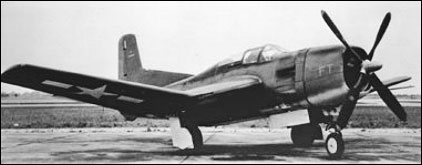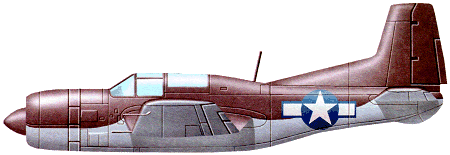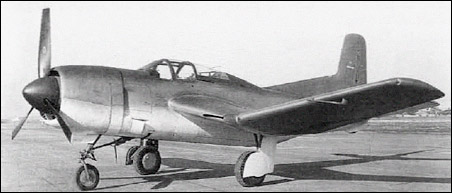 |
Douglas BTD Destroyer1943 |  |
| TORPEDO/DIVE-BOMBER | Virtual Aircraft Museum / USA / Douglas |
 |
Early service use of the Douglas SBD Dauntless had convinced the US Navy of its capability as a dive-bomber: its later wartime record, in such actions as the Battle of the Coral Sea (May 1942) and the Battle of Midway (June 1942), merely provided confirmation. Long before that date, however, the US Navy had initiated the procurement of a more advanced dive-bomber, leading to the development by Douglas of a two-seat aircraft in this category, of which two prototypes were ordered by the US Navy in June 1941.
 Designated Douglas XSB2D-1 Destroyer, the first prototype made its initial flight on 8 April 1943. But instead of being ordered into production, it was used as the basis of a new aircraft which the cut-and-thrust of war in the Pacific had shown to be more essential. As the XSB2D-1, the prototype was a clean and purposeful-looking two-seat dive-bomber, introducing an internal bomb bay and, for the first time for an aircraft to operate from an aircraft-carrier, retractable tricycle landing gear. The US Navy's new requirement was for a single-seat torpedo/dive-bomber, and the XSB2D-1 was modified for this new role by conversion to a single-seat cockpit, the addition of two wing-mounted 20mm cannon, enlargement of the bomb bay and the provision of increased fuel capacity. Airbrakes were installed in each side of the fuselage, and the big Wright Cyclone 18 engine of the XSB2D-1 was retained to give the requisite high performance. A contract on 31 August 1943 increased earlier orders for this aircraft, designated BTD-1 and retaining the name Destroyer, to 358. Deliveries of production aircraft began in June 1944, but only 28 had been delivered before contract cancellation was initiated soon after VJ-Day. The Destroyer's performance was disappointing and, so far as is known, the type was not used operationally. Two aircraft were provided experimentally with a mixed powerplant, a 680kg thrust Westinghouse WE-19XA turbojet being fitted in the rear fuselage and fed with air through a dorsal inlet aft of the cockpit. Thus designated XBTD-2, the aircraft were the first jet-powered machines of Douglas and the US Navy. A first flight was made in May 1945, but at speeds over 322km/h the downward-angled turbojet could not be used. The project was cancelled in late 1945.
|  COMPANY PROFILE | ||||||||||||||||||||||||||||||||||||||||||||||||||||||||||
 |

|


